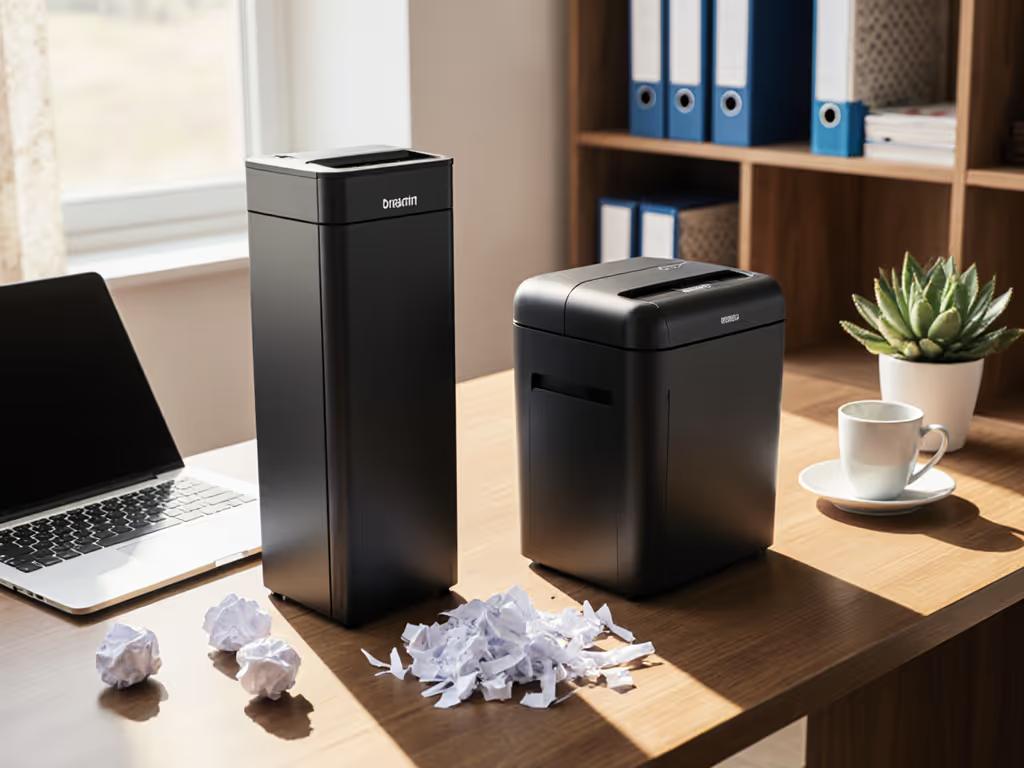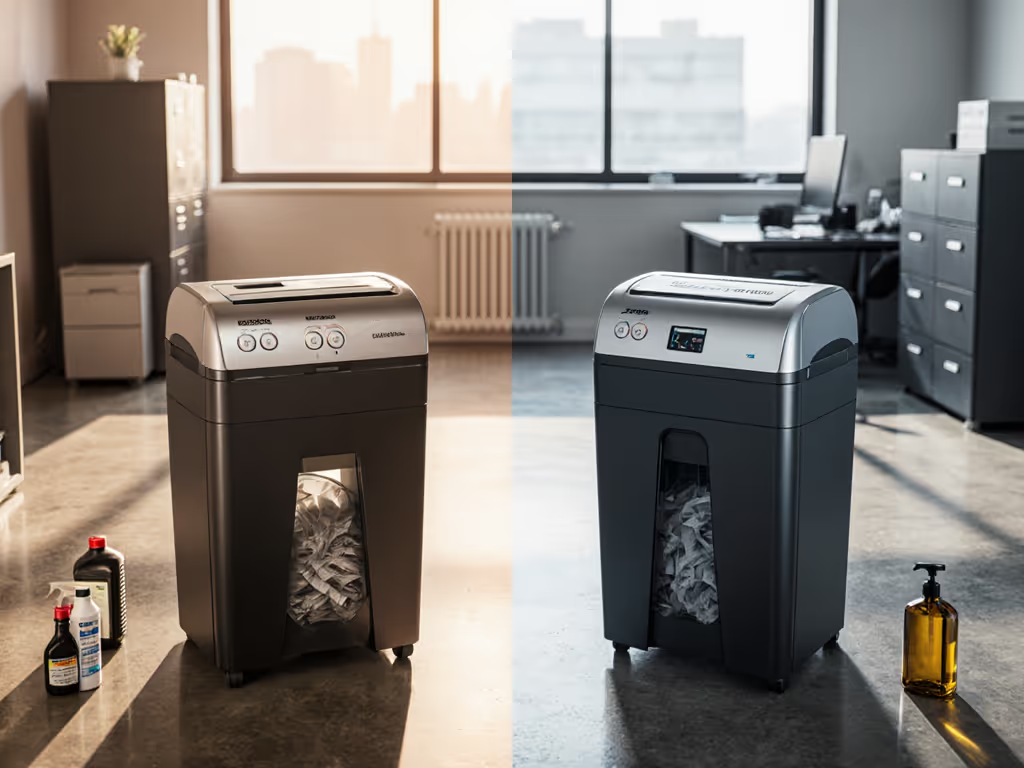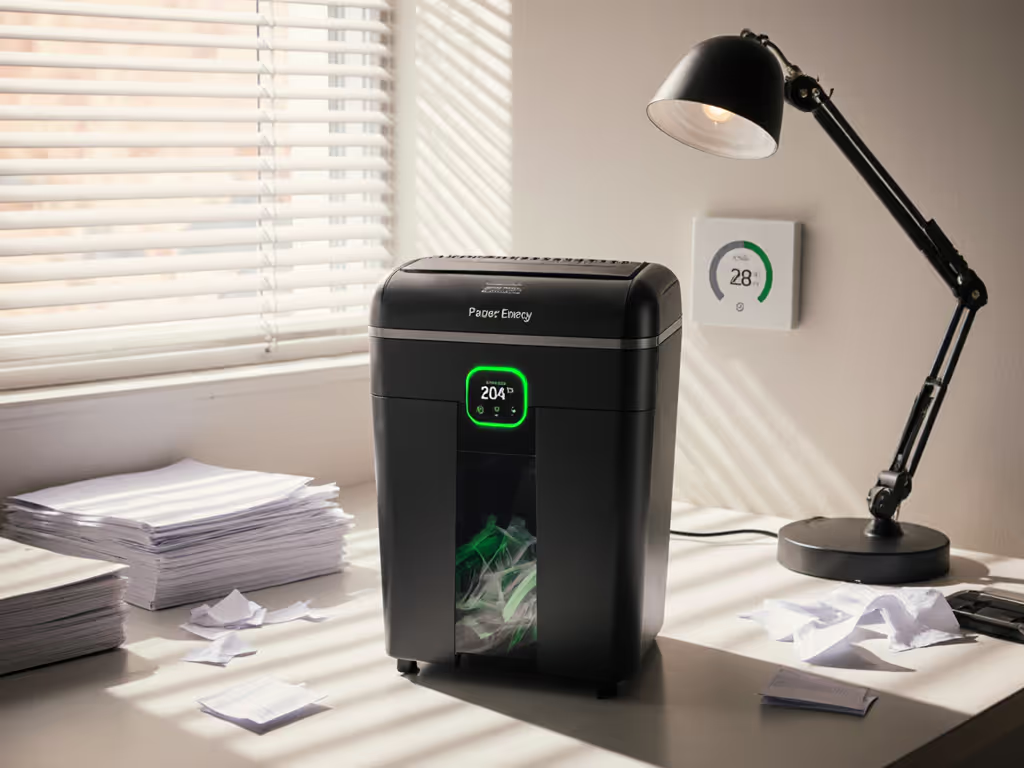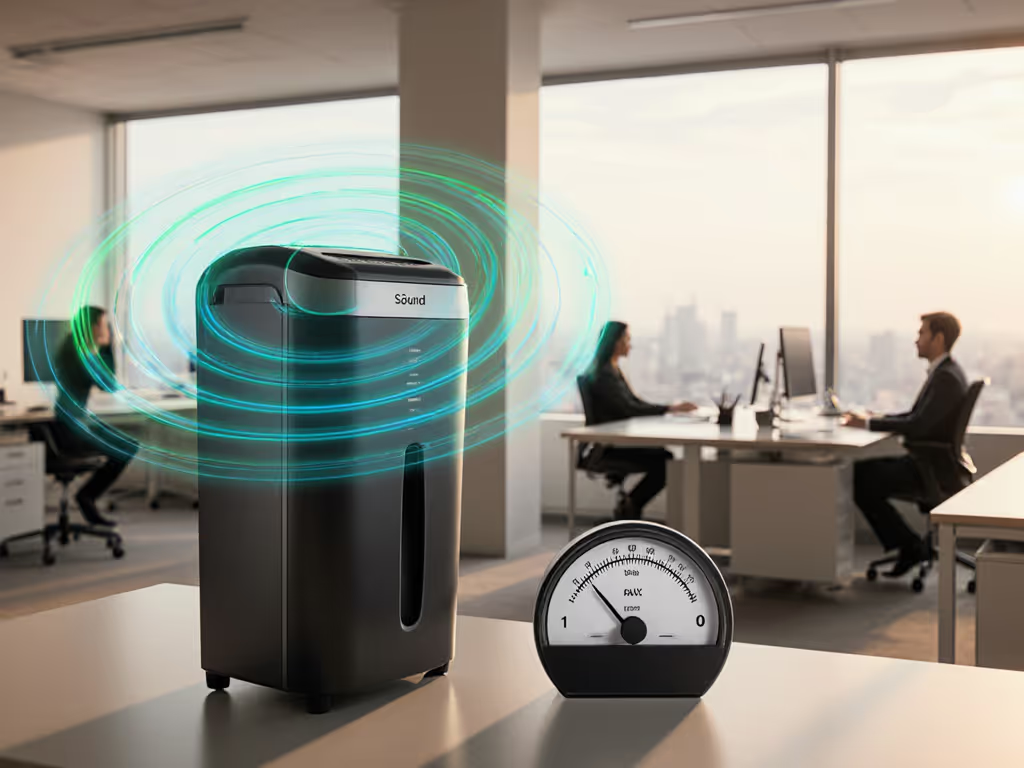
Auto-Oiling vs Self-Lubricating Shredders: Maintenance Reality Check

Shredder maintenance is where budget plans meet operational reality. While security specs dominate buying decisions, lubrication strategy becomes the invisible hand shaping your total cost of ownership (TCO) over three years. Auto-oiling systems and self-lubricating (oil-free) shredders represent fundamentally different approaches to blade care, each with distinct cost trajectories and reliability implications. Understanding this maintenance divide prevents paying for unused security theater while ensuring durable performance. For step-by-step care basics, see our shredder maintenance guide.
{PRODUCT_FEATURE_BOX(B07YQMMBYJ)}
Auto-Oiling Systems: Precision at a Price
Auto-oiling technology injects lubricant directly into cutting heads via integrated reservoirs or external jugs. Brands like SEM pioneered this approach, using electronic sensors to trigger oil dispersion when blades need lubrication. Systems with quick-disconnect jugs (e.g., SEM's design) eliminate messy pouring, a significant upgrade over reservoir models requiring funnels and careful filling. If you need the right oil, jug adapters, or disposal supplies, our shredder accessories guide breaks down what actually helps.
Key operational realities:
- Automatic lubrication reduces manual oversight but does not eliminate cost: A gallon of shredder oil lasts 6-8 months in moderate-use scenarios, adding ~$90/year to TCO
- High-precision German steel blades in P-4/P-5+ shredders demand consistent lubrication; inadequate oiling accelerates wear on these premium components
- Units like the Fellowes LX220 require vigilant oil management despite jam-proof engineering, its micro-cut blades need lubrication every 1.5-2 hours of runtime If run time and cool-down intervals confuse you, our duty cycle guide explains how they impact maintenance and longevity.
{PRODUCT_IMAGE(B07CX4DZ4Z)}
Oil-Free Shredders: Maintenance Redefined
Pioneered by Dahle, self-lubricating shredders use cutting cylinders with three-point paper grip and aggressive tooth geometry that eliminates oil dependence. This is not marketing sleight-of-hand: The redesigned mechanical interaction prevents paper slippage without lubricant, creating zero-oil maintenance.
Value flags for over-spec become clear here:
- No recurring oil costs or lubrication schedules
- Elimination of oil-related malfunctions (clogged dispensers, sensor failures)
- 100% compatibility with enclosed spaces, no oil fumes or residue concerns
Replacement cost notes: Oil-free models typically carry 20-30% price premiums, but this gap closes within 18 months when factoring in eliminated consumables and labor minutes. For sub-50-user environments, this technology often delivers superior blade longevity comparison metrics.
Maintenance Reduction Metrics: The TCO Breakdown
| Factor | Auto-Oiling Systems | Self-Lubricating Shredders |
|---|---|---|
| Annual Oil Cost | $80-$120 | $0 |
| Labor Minutes/Month | 15-45 (refills, troubleshooting) | 0-5 (cleaning only) |
| Failure Points | Sensors, pumps, clogs | Mechanical wear only |
| 3-Year TCO | $1,200+ (mid-range unit) | $900-$1,000 |
| Assumes 15 hr monthly runtime, mid-tier models |
Oil-free technology is not magic: it is mechanical efficiency replacing chemical dependency. If you will not use the precision of auto-oiling, do not fund its complexity.
Actionable Next Step: Match Tech to Workflow
- High-volume/high-security sites (>3hrs/day, P-4+): Auto-oiling justifies its cost through extended blade life in continuous operation. Prioritize models with external jug systems.
- Moderate/remote offices (<2hrs/day, P-3/P-4): Self-lubricating shredders reduce operational friction. The Aurora AU1210MA delivers micro-cut security without oil logistics, but verify actual daily volumes first.
- Reality-check your specs: Micro-cut shredders demand 3x more lubrication than cross-cut models. If switching to cross-cut satisfies compliance needs (most P-4 documents), you have automatically slashed maintenance.
{PRODUCT_IMAGE(B07YQMMBYJ)}
Ultimately, the maintenance advantage goes to the technology aligning with your actual shredding patterns. Auto-oiling sustains heavy-duty operations where downtime costs exceed system expenses, while oil-free designs deliver set-and-forget reliability for typical office environments (precisely where over-engineering inflates costs). Map your real daily sheet volume before choosing, and remember: Unused features become budget tumors.
Related Articles


Most Reliable Shredder Brands: Failure Rates and Real-World Performance
Learn how to choose a shredder that holds up in real offices - using failure-rate and jam‑risk data to compare brands - and adopt quick, 30‑second habits that, paired with the right features, can cut jams by up to 73% while reducing downtime and security risks.

Home Shredder Electricity Compared: Auto-Off Performance
Cut home shredder energy use by choosing intelligent auto-off and thermal management and matching DIN security to actual document risk. Use batching, pre-sorting, and regular maintenance to save power without sacrificing privacy.

Shredder Decibel Comparison: Quiet Office Models Tested
Shredder noise is a compliance and productivity issue, not a nicety. Use decibel benchmarks, P‑level guidance, and duty-cycle tips to select a quiet (<= 60 dB) P‑4 model that matches your office and gets used daily.

